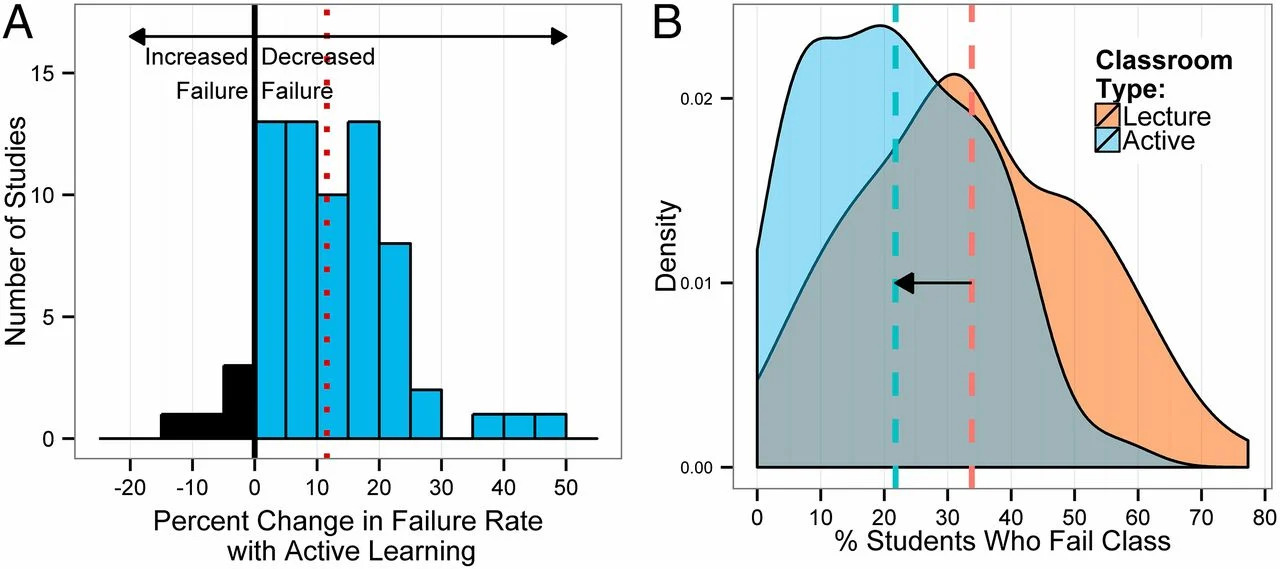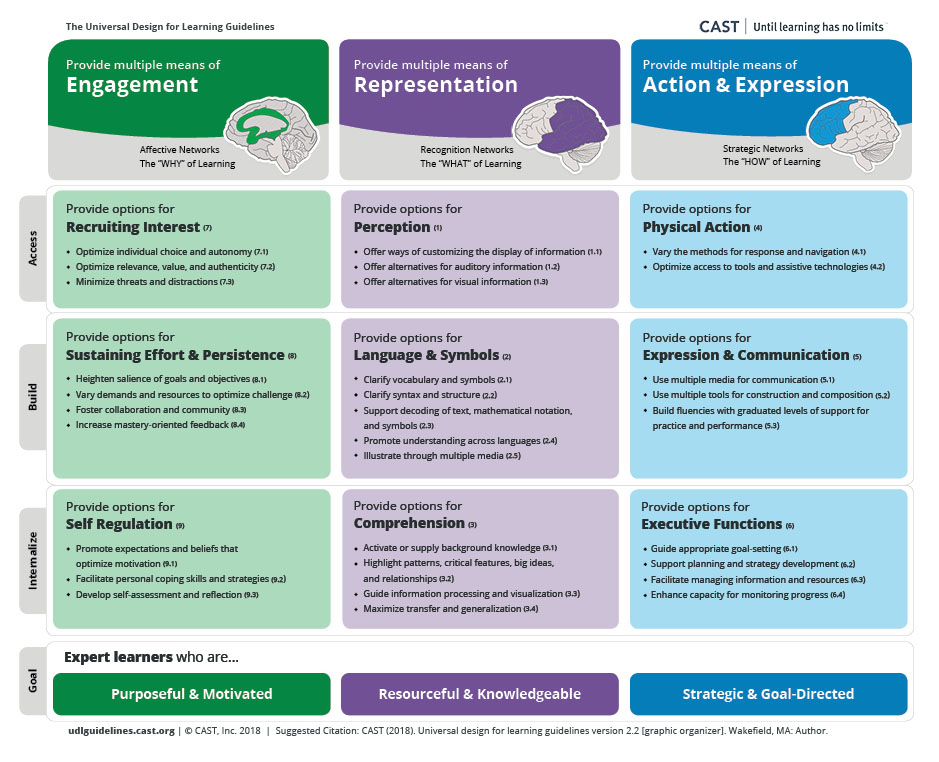The Proven Benefits of Active Learning
Author : Jack Carey
Although the benefits of Active learning are plentiful— many universities have been slow to adopt it. Even with the growing access to educational technology and new research into pedogogical science, the traditional lecture format still dominates. These sessions are often theory-heavy, one-directional, and increasingly at odds with how students absorb information in an easily-distracted, fast-paced world. Students are disengaging in classroom environments at a rapid rate with a lack of module relevancy contributing to a practical skills gap for graduates in the workplace (see our blog on student disengagement crisis).
Active learning represents a deliberate shift from this model. It replaces passive listening with interactive, student-driven engagement, and reflection. By incorporating collaboration, real-time application of concepts, and structured opportunities for reflection, it enables learners to develop a deeper understanding of subject matter while building transferable skills. In contemporary higher education settings, this student-centred approach has become a necessary component of effective teaching practice.

What is Active Learning in Higher Education?
At its core, active learning is learning by doing. In place of rote memorisation or extended lecture delivery, learners are invited to explore, collaborate, and create in ways that promote deeper cognitive processing. This method shifts the educator’s role from being the primary source of content to that of a facilitator who designs and guides interactive, student-centred learning experiences using their deep expertise.
Active learning methods for university teaching include:
- Structured group discussions
- Debates and evidenced-based argumentation
- Problem-solving activities
- Role-playing scenarios and simulations
- Peer-to-peer teaching exercises
- Hands-on or project-based assignments
These methods supports knowledge retention, enhances learner motivation, and bridges the gap between theory and practice. While this approach has been presented as a strong methodology in higher education discourse for decades, the urgency of its implementation has intensified in recent years— particularly as institutions respond to the growing demand for real-world skill development and sustained student engagement.
Advantages of Active Learning for Universities
The shift toward a more collaborative, real-world classroom is not merely an educational trend—it is a strategic imperative. In the years since the pandemic, universities and training providers have encountered two pressing challenges: declining student engagement and a heightened demand for real-world learning outcomes.
Challenge 1: Traditional lecture formats often leave students disengaged.
Extended, one-directional delivery can discourage interaction, as questions may be perceived as disruptive to the lecture flow. As a result, many learners remain passive participants, disconnected from the learning process.
Solution: Active learning reframes students as problem-solvers and focused contributors. Through collaborative projects, peer-led instruction, and real-time problem-solving, learners experience concepts in practice, taking ownership of both the process and outcomes.
Challenge 2: Institutions must demonstrate measurable programme impact.
Employers increasingly prioritise graduates with transferable skills such as critical thinking, communication, and adaptability. Accreditation bodies request evidence of learner-centred approaches, while students themselves expect interactive, applied real-world experiences that connect academic study to professional realities.
Solution: Active learning embeds skills development directly into course design. By integrating interactive, applied tasks that bridge theory and practice, it meets institutional accountability requirements while preparing students for the demands of the modern workplace.
The impact extends beyond the classroom. Active learning strengthens student satisfaction, supports retention, and ensures alignment with both the skills agenda and contemporary pedagogical standards.
3 Key Benefits of Active Learning for University Students
1. Increased Student Engagement
Active learning consistently leads to higher levels of attention and participation. When students are asked to engage—whether by discussing, solving, or reflecting—they become more present, responsive, and involved in the lesson.
Recent studies have shown that students in traditional classrooms are 1.5x more likely to fail in comparison to active learning environments. This study explored this pedagogical methodology across various STEM fields, noting consistent improvement in grades held across class sizes, class levels, and course types.
More interaction means more attention—and that’s the foundation of deeper learning.

2. It builds skills that matter beyond the classroom
Active learning goes beyond delivering content—it nurtures workplace-ready skills like communication, collaboration, and critical thinking.
- Teamwork is non-negotiable: Harvard research shows that 78 % of U.S. occupations require working “very” or “extremely” closely in teams. Collaborative learning in class mirrors this real-world demand.
- Soft skills are critical: Harvard Business School research (2025) concludes that communication and critical thinking are now considered even more essential than technical expertise. Active learning embeds practice in these areas through peer collaboration, discussions, and real-time problem solving.
Active learning equips students with what they need to succeed in both academia and the workplace.
3. It Makes Assignments feel Personal and Purposeful
Active learning brings students into the process. When they help shape the task, choose the topic, or connect it to real-world issues, the work becomes meaningful—not just mandatory.
This sense of ownership boosts motivation and helps material retention.
“It almost felt like we were being taken on a magical mystery tour!”
— Student, Anytime Creativity session
Learning becomes more than information. It becomes an experience. That’s what makes it stick.
How Anytime Creativity Supports Active Learning
At Anytime Creativity, we believe classrooms should be hands-on, flexible, and genuinely engaging. That’s why we’ve built a library of active learning tools, templates, and creative prompts—designed to help educators plan student-centred lessons that spark curiosity and confidence.
Whether you’re leading a discussion, running a group project, or designing a real-world challenge, our platform gives you the resources to make it happen—fast. From plug-and-play activities to adaptable lesson frameworks, we make it easier to turn great ideas into powerful classroom experiences.
We’re here to support your shift toward learner-centred teaching—because creativity, collaboration, and connection are what make learning stick.
See how our tools improved student confidence and collaboration in these real-world case studies.
Final Thoughts
Active learning isn’t just a trend—it’s a proven strategy to boost engagement, improve learning outcomes, and build transferable real-world skills. Even incremental shifts—such as integrating collaborative activities or real-time problem-solving—can significantly influence how students engage with content, interact with peers, and apply their knowledge.
In an era where universities must prepare students for an unpredictable future, active learning offers a practical, research-backed pathway to more meaningful education.
Frequently Asked Questions
1. What is active learning in higher education?
Active learning is a teaching approach where students actively participate in the teaching process through discussion, collaboration, and practical application of ideas, rather than passively receiving information. It encourages deeper understanding, skill development, and the ability to connect theory to real-world contexts.
- What does active learning look like in practice?
Active learning can take many forms, including group discussions, problem-solving activities, simulations, role-play exercises, peer-to-peer teaching, and project-based assignments. The common element is that students are engaged as participants, applying knowledge and reflecting on their learning during class time.
3. Why is active learning important for universities?
Active learning enhances engagement, improves retention of knowledge, and develops transferable skills such as teamwork, communication, and critical thinking. It also aligns with employer expectations and accreditation requirements, making it an essential component of modern higher education teaching strategies.
4. How can technology support active learning?
Technology can facilitate active learning by enabling interactive polling, real-time feedback, virtual simulations, and collaborative platforms for group work. Digital tools also make it possible to extend active learning into hybrid and online environments, increasing accessibility and flexibility for both students and educators.
5. How can active learning be implemented effectively?
Effective implementation starts with small, manageable changes—such as adding short interactive activities to lectures. Using clear instructions, well-designed rubrics, and opportunities for reflection ensures that activities meet module objectives. Collaboration among teaching staff and access to shared resources can also improve consistency and impact.


